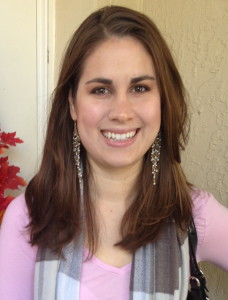NSU Newsroom
SharkBytes
Horizons
This version of NSU News has been archived as of February 28, 2019. To search through archived articles, visit nova.edu/search. To access the new version of NSU News, visit news.nova.edu.
This version of SharkBytes has been archived as of February 28, 2019. To search through archived articles, visit nova.edu/search. To access the new version of SharkBytes, visit sharkbytes.nova.edu.
Death of Actor/Comedian Robin Williams Provides Opportunity to Discuss Suicide Awareness and Prevention

Scott Poland, Ed.D.
FORT LAUDERDALE-DAVIE, Fla. – The tragic loss of actor Robin Williams, a brilliantly funny man, loved by many, has sparked massive media and news coverage. As Robin Williams has touched so many of our lives, we are confronted with the unique, albeit unfortunate, opportunity to touch the lives of the thousands of others who are suffering from depression and are at-risk for suicide.
Suicide rates for Americans have increased significantly in recent years, especially for middle age men. The most recent statistics available (2011) show that someone died by suicide every 13.3. minutes – a total of 39,518 suicides. (American Foundation for Suicide Prevention).
With the loss of such a well-known star to suicide, it is important to bring awareness to the phenomenon of suicide clusters. There are two types of suicide clusters – “point clusters” and “mass clusters.”

Shannon Worton, Psy.D.
The term “point cluster” refers to numerous suicides confined to a specific geographical location in a short amount of time. It has been well documented in the literature that adolescents, who are prone to imitation, are particularly vulnerable with regard to point clusters and they have occurred in many communities. The Office of Suicide and Violence Prevention (SVP) at Nova Southeastern University (NSU) has responded to numerous point clusters across the U.S. to help those affected to grieve and process the loss, and to educate community members on suicide prevention to prevent further tragedies.
“Mass Clusters,” particularly relevant given the loss of Robin Williams, refers to an increase in suicide rates across the nation following exposure to suicide via media coverage. Mass cluster suicides were first identified in 1774 when the term “werther effect” was coined following an increase in the suicide rate in Europe after Goethe’s book, The Sorrows of Young Werther, was published in which the hero died by suicide.
In the United States there was an increase in the national suicide rate following the suicide of the actress, Marilyn Monroe. Fast forward to 1994 and there wasn’t an increase in the suicide rate following the death of the musician Kurt Cobain. That was attributed to media coverage that promoted suicide prevention along with Cobain’s family encouraging his fans not to imitate his behavior.
Coverage of suicide by the media has the potential to influence the lives of the millions of individuals who live in our country. With that, it is important to approach the coverage of Robin Williams’ death in a sensitive manner. We’ve already started to see some backlash toward media that have reported some of the intimate details from the preliminary medical examiner’s report. Rather than dwelling on those facts, coverage should focus almost exclusively on the warning signs of depression and suicide and where individuals can get help for themselves or their loved ones.
Media coverage of suicide should always include the National Crisis Line number 800-273-Talk or 800-273-8255. Local resources, including suicide prevention organizations, can serve as consultants to provide this information and model suicide reporting guidelines have been developed. National resources, including the American Foundation for Suicide Prevention, can be used to obtain information on media guidelines, statistics, prevention resources, and ways to get involved. Additionally, NSU’s Office of Suicide and Violence Prevention provides a variety of resources, including training videos on suicide prevention and suicide assessment, a quarterly newsletter with the newest information relevant to suicide prevention, and links to additional resources.
Robin Williams touched our lives in many ways. Now it’s our turn to follow in his footsteps and touch the lives of so many others though bringing awareness to the risk factors of suicide, and connecting those at risk to the needed support and treatment.
###
About the Authors:
Scott Poland, Ed.D., is an NSU professor and a nationally recognized expert on school crisis, youth violence, suicide intervention, self-injury, school safety, threat assessment, parenting and the delivery of psychological services in schools. Poland is a founding member of the National Emergency Assistance Team for the National Association of School Psychologists and serves as the Prevention Director for the American Association of Suicidology. He has led multiple national crisis teams following numerous school shootings and suicides and served as the team leader of the crisis response team sent to Jefferson County Public Schools during the aftermath of the Columbine High School shootings.
Shannon Worton, Psy.D., is a graduate of the Nova Southeastern University doctoral clinical psychology program and is completing her post-doctoral residence in NSU’s Suicide and Violence Prevention Office.